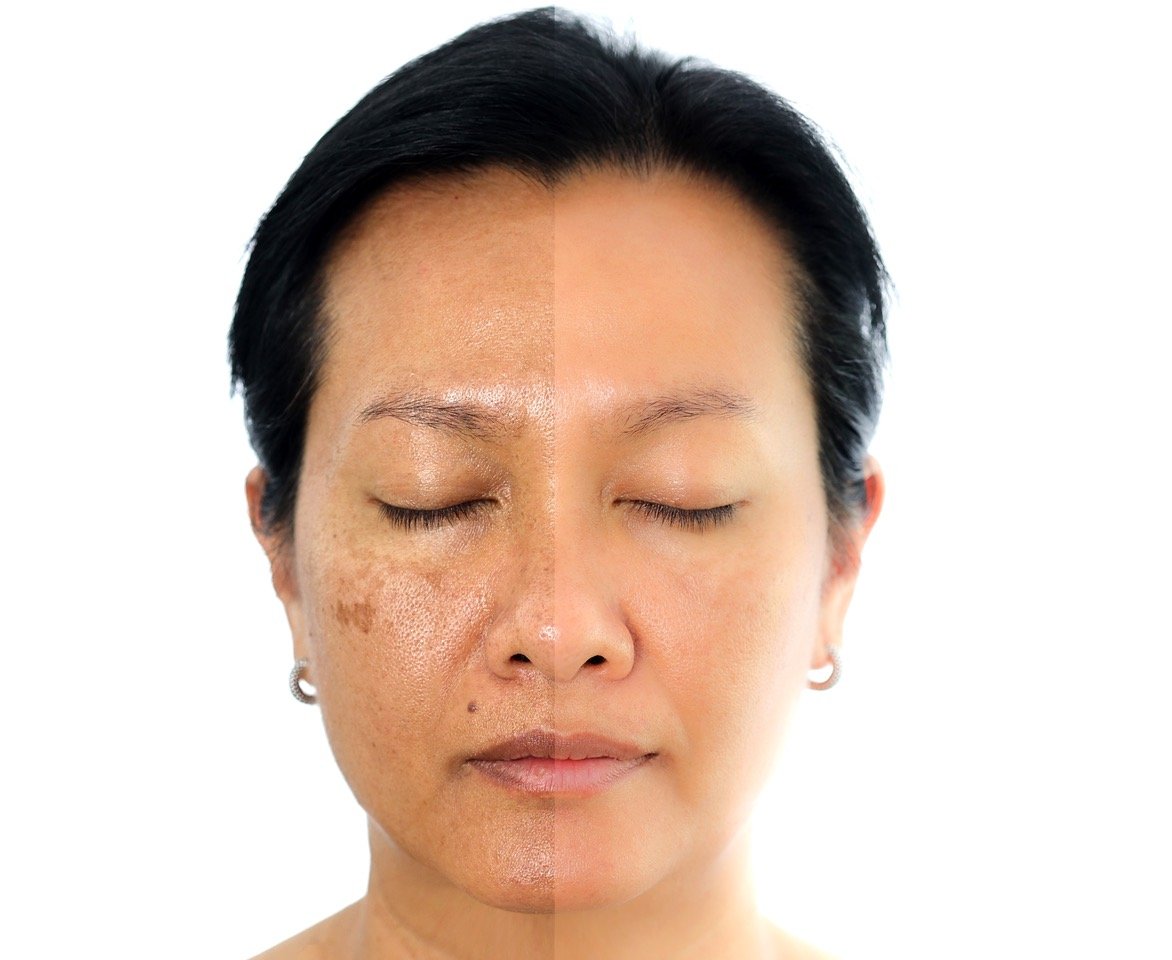What Is Melasma?
Melasma is a discoloration disorder that usually has a significant social impact on those affected. It arises more often in women, though it can affect men. Most commonly, melasma occurs in darker-skinned individuals when exposed to the sun or other ultraviolet light.
About melasma
Melasma pigmentation consists of sharp, geometrically-shaped, brown patches on the cheeks, forehead, and occasionally forearms. It can also sometimes appear on the neck, upper arms, and breastbone. The three patterns are centrofacial (central face), malar (cheeks), and mandibular (jawline). However, most patients have a mixed pattern. Classification also goes by depth: epidermal (superficial) and dermal (deep).
Possible causes
Although the actual cause is unknown, ultraviolet light is suspected to be the ultimate trigger. In addition to ultraviolet light, female hormones are known to contribute to discoloration. Therefore, melasma is more common and more severe in women. Sources of hormones may be pregnancy or birth control.
Treatment options
Treatments of varying success exist, and there is ongoing research into promising new possibilities.
Sun and ultraviolet light avoidance is crucial.
The fundamental basis of melasma treatment is strict sun avoidance. There is no substitute. This includes protection from indirect rays when sitting in the shade, near a window, or driving in a car. Sunblock that protects from UVA and UVB rays can be helpful when strictly reapplied every two hours. Tinted sunscreen with iron oxide may add protection from visible light sources.
Topical prescription creams are an option.
Topical hydroquinone cream, available by prescription, is often used in treatment. It should be used as directed to the affected areas and only for limited periods. With improper use, pigmentation can actually increase over time.
Hydroquinone has also been formulated with other ingredients that counteract pigmentation, including tretinoin and hydrocortisone. Topical methimazole (an oral antithyroid drug) 5% cream is showing promise in studies as a future treatment.
Use OTC products with care.
Many patients will try over-the-counter “dark spot correctors” or “skin brighteners” before consulting a dermatologist. Some of the ingredients found in these products include azelaic acid (also available as a stronger prescription), kojic acid, mequinol, niacinamide, vitamin C, vitamin E, glycyrrhetinic acid, arbutin, pidobenzone 4%, and tranexamic acid. Cysteamine cream can also be used for hyperpigmentation. Patients should keep in mind that any product that causes irritation can also lead to discoloration. These products should be used with care.
Oral medications may be a choice.
Currently, oral tranexamic acid, a derivative of the amino acid lysine, is being studied for the treatment of melasma. Results have been promising, but patients should be aware of potential side effects, such as gastrointestinal distress and menstrual irregularities. It must be used with caution in pregnancy, as well as for people who smoke, have blood clotting disorders, or have cardiac, renal, or pulmonary disorders.
Procedures offer possibilities.
If topical treatments don’t get the desired results, some procedures may be helpful. Chemical peels and light-based treatments, such as lasers, are often employed. These treatments must only be performed by a highly trained individual, as there can be significant, permanent complications, such as scarring and lighter or darker pigmentation.
To get the best possible results with a personalized treatment plan, consult one of our board-certified dermatologists.
Any questions? Consult one of our board-certified dermatologists. Please contact SSDP to schedule an appointment with any of our physicians.


